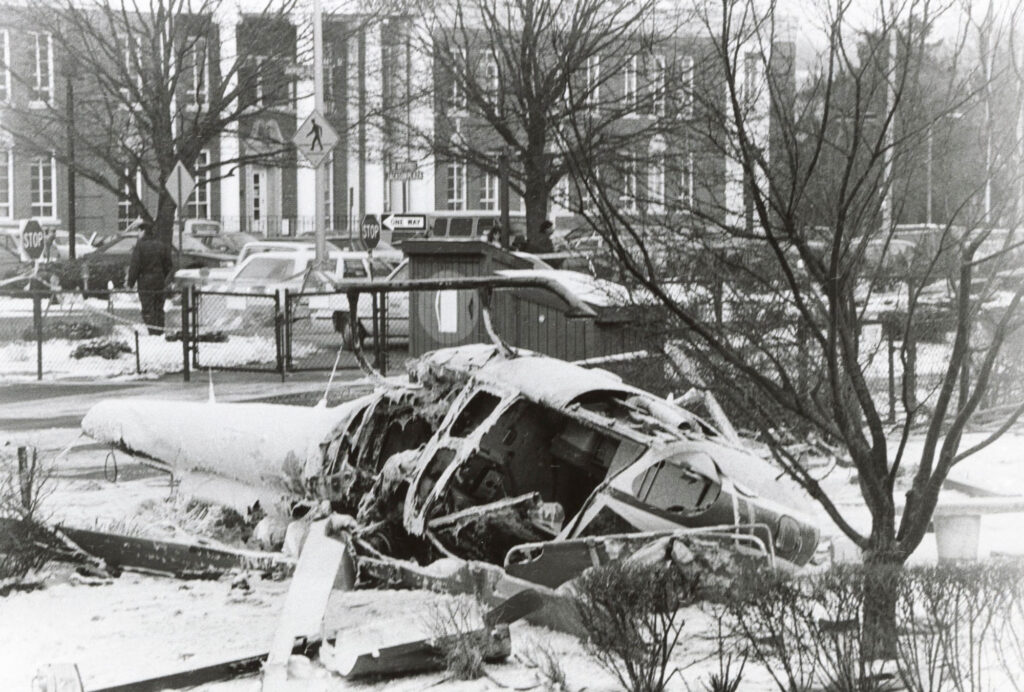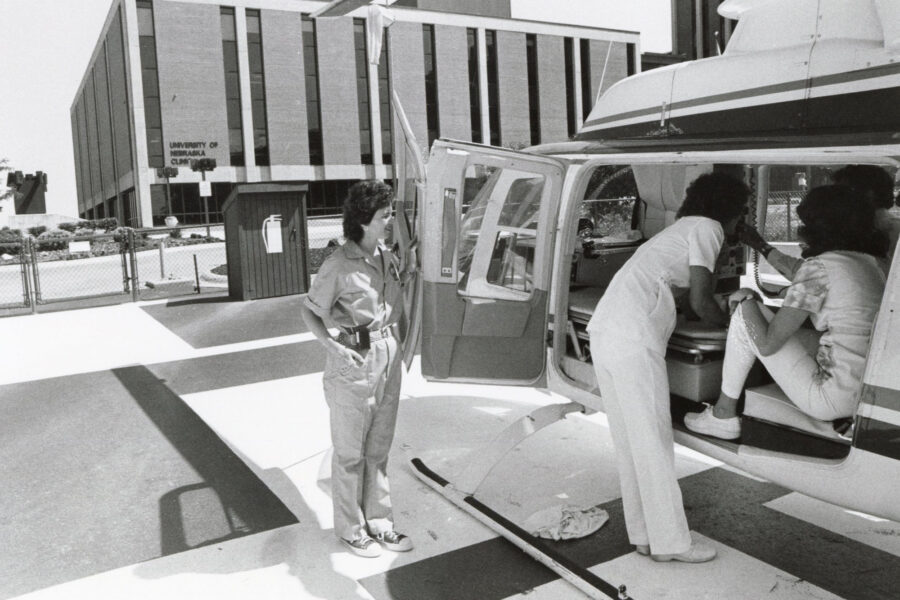Helicopter medical transport is something people can take for granted today. For more than 40 years, medical helicopters, pilots and flight nurses have successfully transported emergency patients to UNMC and Nebraska Medicine for life-saving care.
UNMC’s helicopter medical transport was not the first in Omaha. Creighton University Medical Center-St. Joseph Hospital (today Bergan Mercy) started Life Flight in 1979. In 1981, the University of Nebraska Board of Regents voted in favor of University Hospital (today Nebraska Medicine) joining with four other Omaha hospitals — Clarkson, Children’s, Methodist and Immanuel — to use a helicopter to transport emergency cases from across the state.
SkyMed helicopter service began on Oct. 26, 1981. The helicopter flew out of Millard Airport while the city reviewed a permit to build a helipad at UNMC.
SkyMed’s first patient was a 1-day-old newborn flown from West Point to UNMC for emergency surgery. Within the first week, SkyMed transported seven patients from O’Neill, Columbus, Auburn, Hamburg, Iowa, and Yankton, South Dakota, to hospitals in Omaha. In the first month, SkyMed transported 29 patients — newborns, children and adults — to Omaha.
In January 1982, with the helipad constructed at 44th and Dewey Streets, SkyMed was based at UNMC. In 1984, a fixed-wing airplane was added to the fleet. It was fitted and equipped to handle patients and could fly beyond the helicopter’s 200-mile range, as well as flying in weather that typically grounded helicopters.

The most memorable and scary SkyMed flight occurred on Jan. 20, 1988. Around 5 p.m., on a freezing day, the pilot and flight nurse took off to move the helicopter from the UNMC helipad to Clarkson Hospital to allow space for a Life Flight helicopter to land with an emergency patient. Seconds after takeoff, the SkyMed helicopter lost control and crashed onto the helipad. The helicopter flipped over, and the engine caught fire, with fuel pouring out.
The first individual on the scene was Thomas Smith, then-University Hospital director of the clinical practice board. The crash force had thrown the flight nurse’s seat from the helicopter, and he had become trapped by the seatbelt. Smith cut the nurse out using the nurse’s pocketknife. Smith and the second individual on the scene, cement finisher Leo Rognlie, moved the nurse and pilot away from the crash.
Luckily, the pilot and flight nurse sustained only minor injuries, and no one on the ground was injured. Authorities determined that ice crystals in a rotor part caused the crash.
To learn more about the 1988 SkyMed crash from an eyewitness, watch Tom O’Connor’s oral history on the McGoogan Health Sciences Library website.
In 1997, Life Flight and SkyMed merged to form MedFlight, and today the service is LifeNet through the company Air Methods.

What a great beginning to our story! We are proud and honored to have Life Flight, SkyMed, and MedFlight as our foundation that has built a successful Air Medical Provider that continues to serve Omaha and the surrounding communities. I have had the honor to work and learn from many of these flight nurses, flight medics, pilots, and NICU nurses the ongoing knowledge to provide the critical care available by our teams today! 2024 marks 45 years of Air Medical Services in Omaha NE. It is our privilege to be a part of this amazing history!
Jeremy Moore CFRN
Clinical Base Lead
LifeNet 1-1 Omaha NE